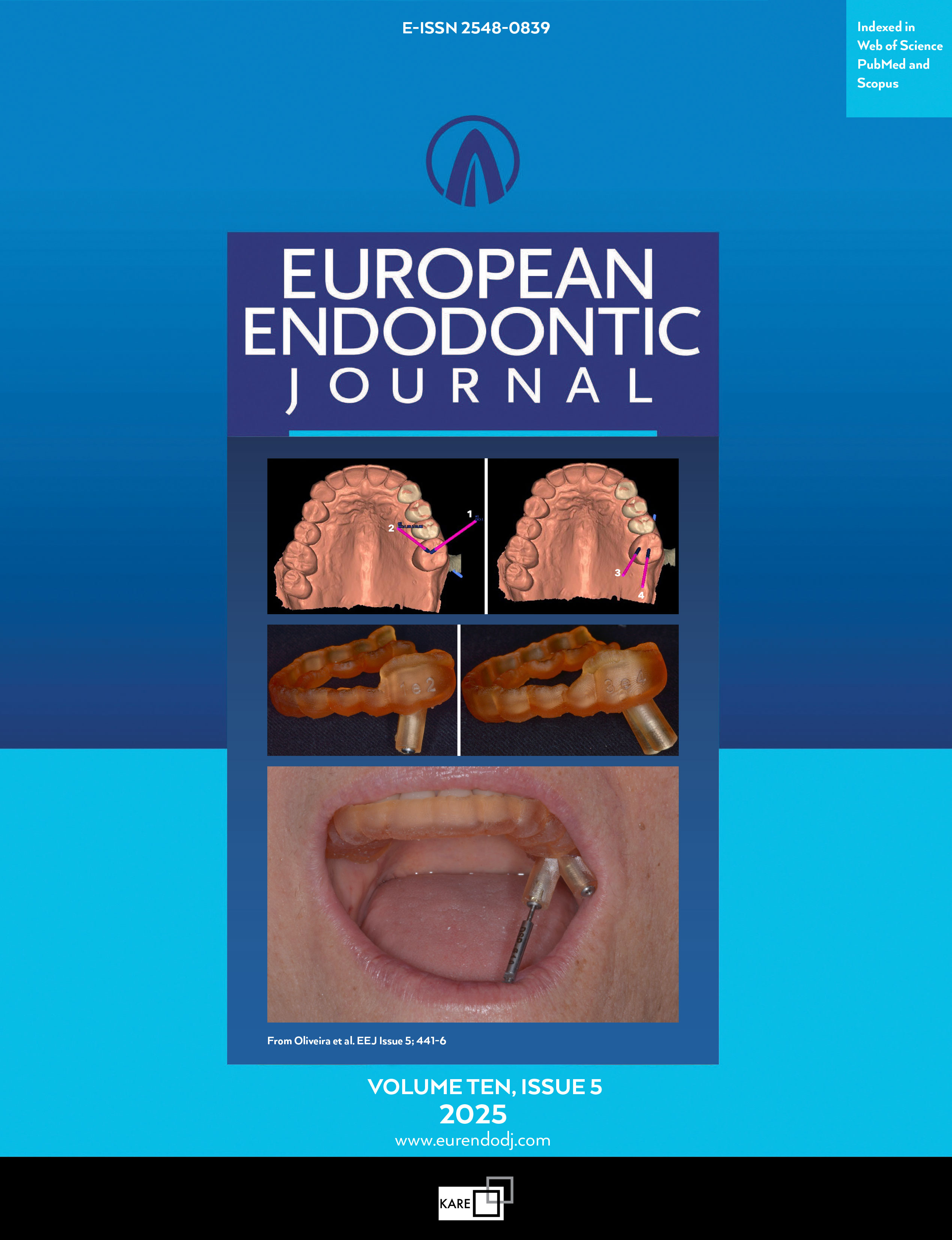Metrics
2024 IMPACT FACTOR
5 year Impact Factor
Eigenfactor Score
2024 CiteScore
Journal Citation Reports
(Clarivate 2025, JIF Rank)
Human Stem Cells of Apical Papilla Viability Following the Removal of Triple Antibiotic Paste in a 3D Root Canal Culture Model
Ratthanan Rotchanachiranon1, Nisarat Ruangsawasdi2, Jittranan Kaewprag11Department of Operative Dentistry and Endodontics, Mahidol University, Faculty of Dentistry, Bangkok, Thailand2Department of Pharmacology, Mahidol University, Faculty of Dentistry, Bangkok, Thailand
Objective: This study investigated the residual effects of various concentrations of triple antibiotic paste (TAP) on the viability of human stem cells of the apical papilla (hSCAPs) in a 3D root canal culture model.
Methods: Sixty-four single-rooted segments were prepared and allocated into five groups (n=12): four concentrations of TAP (1 mg/ml, 2.5 mg/ml, 5 mg/ml, 10 mg/ml) and a control group with vehicle alone. TAP was prepared by mixing USP-graded antibiotic powder with vehicle (macrogol and propylene glycol). The canals were filled with the prepared medication for 28 days. After removing TAP, fibrin gels containing hSCAPs were loaded into the canal and incubated for 7 days. Cell morphology was observed using confocal laser scanning microscopy (CLSM), whilst cell viability was measured using the 3-(4,5-dimethylthiazol-2-yl)-2,5-diphenylte-trazolium bromide (MTT) assay.
Results: The vehicle alone and the 1 mg/ml TAP groups showed viable and proliferative cell morphology. However, higher concentrations of TAP displayed non-proliferative cells as observed by CLSM. For the cell viability test, 1 mg/ml TAP did not demonstrate a different percentage of cell viability from the control group. However, 2.5 mg/ml, 5 mg/ml and 10 mg/ml TAP exhibited significantly lower percentages of cell viability compared with the control (p<0.001).
Conclusion: Cells can survive at low TAP concentrations of ≤1 mg/ml. However, harmful effects become evident at TAP concentrations of ≥2.5 mg/ml.
Manuscript Language: English
(220 downloaded)


